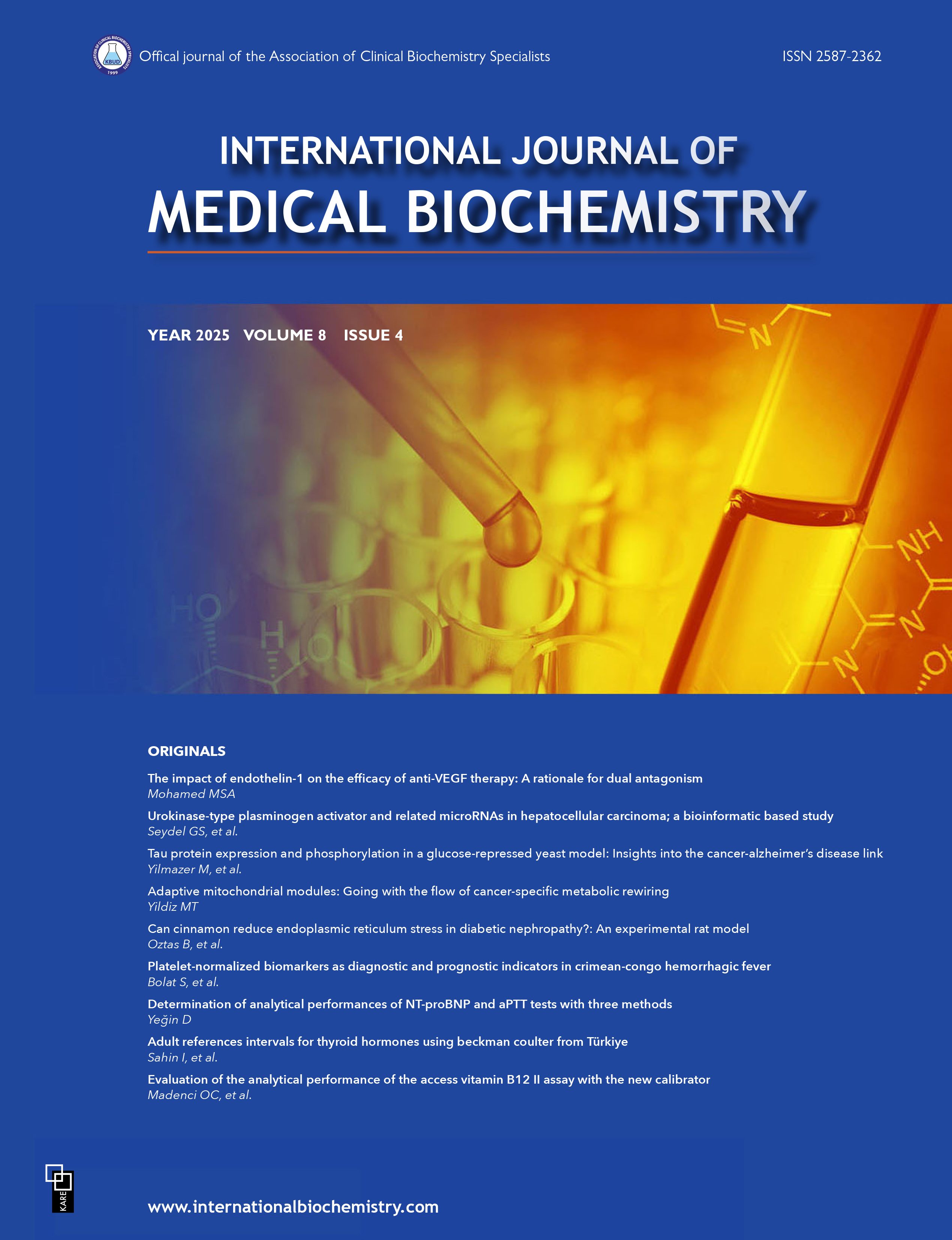Ischemia-modified albumin level in vitamin D deficiency
Fatma Demet Arslan, Inanc Karakoyun, Anil Baysoy, Selin Onur, Banu Isbilen Basok, Ayfer Colak, Can DumanDepartment of Medical Biochemistry, University of Health Sciences, Tepecik Training and Research Hospital, Izmir, TurkeyINTRODUCTION: Vitamin D has been associated with extra-skeletal pathologies through mechanisms involving inflammatory and oxidative stress processes. Ischemia-modified albumin (IMA) is one of the earliest indicators of ischemia, and is regarded as a marker of oxidative stress. In the present study, the IMA level in serum samples with various 25-OH vitamin D [25(OH)D] concentrations was examined for signs of oxidative stress as a result of vitamin D deficiency.
METHODS: A total of 80 serum samples requested by clinicians for 25(OH)D testing and analysis were randomly selected and divided into 4 groups (n=20 in each group) according to the 25(OH)D concentration. Group 1: ≤10 ng/mL (severe deficiency), Group 2: 10-20 ng/mL (deficiency), Group 3: 20-30 ng/mL (insufficiency), and Group 4: ≥30 ng/mL (sufficiency) were formed. Serum IMA was measured spectrophotometrically, and the results were expressed in absorbance units (ABSU).
RESULTS: The IMA level in Group 1 through Group 4 was 0.541±0.082 ABSU, 0.515±0.059 ABSU, 0.438±0.085 ABSU, and 0.467±0.102 ABSU, respectively. The IMA level was found to be significantly different in comparisons between Groups 1 and 3, Groups 1 and 4 and Groups 2 and 3 (p=0.001, p=0.032, p=0.022, respectively); no significant difference was found in other comparisons of the groups. There was a weak negative correlation between serum 25(OH)D and IMA level (r= -0.346; p=0.002).
DISCUSSION AND CONCLUSION: The serum IMA level is elevated in severe vitamin D deficiency and vitamin D insufficiency due to increased oxidative stress resulting from the inadequate antioxidant function of vitamin D. The IMA level may have been higher in the vitamin D sufficiency group compared with the insufficiency group due to a possible pro-oxidant effect of vitamin D as its level rises. If this hypothesis is confirmed with future studies, it may be appropriate to consider a serum 25(OH)D level of between 20 and 30 ng/mL sufficient.
Keywords: Ischemia modified albumin, oxidative stress, vitamin D
Manuscript Language: English







